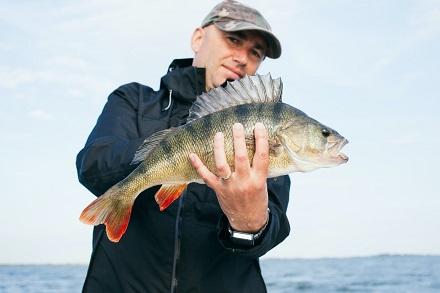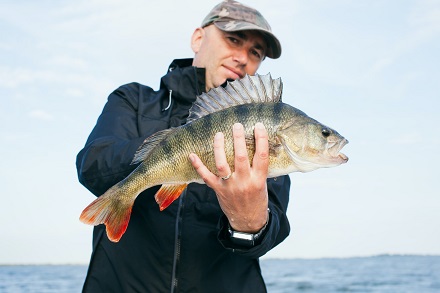

And that, say multiple sources within the industry, has led to an enormous amount of business and an increased demand for products and equitment.
“There’s been very few positives from this pandemic but getting out and fishing and connecting with the outdoors is one,” said Chris Megan, board chairman of the American Sportfishing Association, which puts on the International Convention of Allied Sportfishing Trades (known to the industry as ICAST). “Never have so many turned off the evening news, put down the cellphone and instead went for a walk … or made their first cast.”
And if the sight of more anglers hitting local fishing holes isn’t enough for an economic perspective, Emily Harley of B.A.S.S. offers the following statistics:
“For the first time in 10 years, Iowa saw an increase in fishing license sales. Not just a slight increase, but a jump of 55 percent. New York experienced an increase of 30 percent. Resident fishing license sales in Vermont are up more than 50 percent. Minnesota, a state that already had a tremendous number of active anglers, experienced a 60 percent increase in residential fishing licenses. Georgia is up 21 percent, Louisiana is up 53 percent, North Dakota 37 percent, Texas 39 percent and Alabama, my home state, is up 37 percent.”
Furthermore, she notes, there is a distinct uptick in the sales of fishing tackle – which has led, unbelievably, to shortages, according to manufacturers.
“There has been an unprecedented demand for fishing products,” explained Chris Gulstad, executive director of sales and marketing for PRADCO. “We have noticed an incredible influx of new participants in fishing, as we see our entry-level gear flying off the shelves. That said, our Yum line, geared toward advanced bass anglers, has been selling like crazy as well.”
Dan Quinn, field promotions manager at Rapala, agrees. “The demand has been unbelievable. Our struggle has been keeping up with the demand because of social distancing restrictions at manufacturing and distribution plants. But I know a smaller rod manufacturer who is up 300 percent over last year.”
And according to a Fox News report on May 17, a “bait and tackle shortage hits as fishing soars in popularity due to social distancing.”
Harley says, “A stroll down the fishing aisle at my local Walmart confirmed this statement, as there were more empty pegs than products dangling from them.” But, she adds, “to take Larson’s quote a little less literally, it is the benefit of what happens to us while fishing that is most important.”
The essential thing to do, says Chris Megan, publisher of the On the Water Media Group, is embrace the beginners. About 8 million anglers have joined the 50 million people who fish regularly and keeping them is mission No. 1 for the industry.
“We have to embrace these new anglers. We have to provide them with entry level opportunities so they can meet with success,” Megan said. “It’s simply the bend of a rod and a photo to go with it that says, Look at me, I caught something. Today, those 8 million new anglers can become consumers. More importantly, they can become voices if we reach out and show them the way.”
In fact, new anglers are posting images to social media, which makes for a refreshing change from the politically charged matter found on almost every platform.
Harley says that states try to make it easy for anglers to try fishing there while visiting or on vacation – or even fishing from home.
“Most states offer a one-day or three-day license if you want to try fishing somewhere new (and save money instead of purchasing a full year). And, depending on the state, you can typically get a license over the phone with a fast Google search for the state fishing license sales center and phone number for wherever you plan to fish. In Alabama, for example, you can purchase online and download to your phone within just a few minutes.”
Tackle shops, some convenience stores – and Walmarts – sell fishing licenses that anglers can purchase and take away with them at the same time they are buying hooks and nightcrawlers.
Tournaments, whether they are presented with or without spectators, continue to be popular with at-home enthusiasts, according to Front Office Sports, which noted an increased interest in February, with stages one and two of Major League Fishing’s (MLF) second-annual Bass Pro Tour reporting a 72 percent increase in unique tune-ins year-over-year. The league’s in-house live stream, MLFNOW!, attracted over 886,000 unique viewers over the two events for a total of 30 million watched minutes – an 89 percent over 2019’s total averages. By March, the third stage of the competition saw viewership increase by 20% over the already amplified February numbers. The third stage saw the largest spike in interest of the tour, with over 19 million minutes of competition watched by 500,000 unique visitors. The Bass Pro Tour found itself trending on both Facebook and Instagram during stage three with a 72 percent increase in social media impressions compared to stage two. Total social media impressions across all events were also up 15 percent over 2019.
Side note: WOW.
All that media can lead into tournament participation – especially now. In fact, event owners are making it easy for recreational anglers to enter. No boat, no weigh-in, no sponsor, no problem.
Virtual tournaments, called CPR (catch-photo-release) events, are starting to be seen across the board, in freshwater and saltwater enthusiast groups; in fact, Kayak Bass Fishing has been using this method for years. Apps like FishDonkey lower the risk of cheating by allowing angers to submit only images of fish taken during a given event, and not substituting images already in their phone from previous fishing excursions. (Event owners are constantly developing new technology since those who attempt to cheat in fishing events are also trying to stay ahead of the game).
The desired end result of fishing is the angler with a trophy fish – and in many cases, that angler wants the trophy to be displayed in perpetuity. And that leads us to taxidermists.
That industry, as it turns out, has evolved as well. In many cases, taxidermists work from anglers’ photos to create a mold that is painted to be identical to the catch. This method satisfies the anglers’ wish to release the catch – as well as the wish to be able to show it off.
Taxidermists say they have been busier than ever, particularly with fish.
“My business has certainly not slowed down. I would in fact say it has picked up since the start of the pandemic,” says Patrick Krauss of Kraus Fish Artistry in Syracuse, New York. “Not drastically, but maybe 15 to 20 percent, I would guess, which was actually a surprise to me, due to the fact that I was unsure if things would slow down due to layoffs and a decrease in people’s allowances.”
Kraus has an active Facebook page, and posts photos of anglers with their original catch, as well as the replica mounts that are about to be sent out to those anglers.
According to Jimmy Lawrence, owner and operator or Lawrence Taxidermy Studio in Blockton, Iowa, (the Instagram page is here), there has been a distinct uptick in demand for products.
“Business for me has been busier than ever on the fish side and mostly freshwater,” he notes. And the increase is fueled “100 percent by recreational anglers. People are buying out stores from their tackle – entire sections of stores are bare. Everyone is off work and fishing.”

